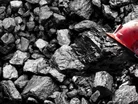Why Aussie miner Atrum Coal has invested in anthracite mine in Canada

Despite the downturn of the coal mining industry, Australian miner Atrum Coal NL has invested $40 million in an effort to develop a $600 million anthracite coal mine in northwest British Columbia, Canada.
The operation termed “The Groundhog Project” has resources of over 1.5 billion tonnes of ultra-high grade anthracite, which is used in making steel, ferro-alloys and specialty industrial markets.
RELATED TOPIC: Is Australia's economy in line to match Canada's?
While the majority of metallurgical coal is first turned into coke before being used in making steel, Anthracite doesn’t need to be transformed into coke first, which makes it the highest grade coal in the world. Unlike regular metallurgical coal, anthracite coal prices have remained two-times the price of regular met coal through the struggles of the sector.
Anthracite sells for US$175 a tonne in Europe, while the met coal price of US$90 per tonne is less than a third of what the price was four years ago.
In addition, Canada not only has world-class deposits of the high-quality coal used to make steel, but B.C.’s investment climate for mining is admittedly better than it is in Australia.
RELATED TOPIC: 4 ways ASX mining investors are affected by Glencore
Atrum vice president of marketing and business development Peter Doyle believes the deposit in and around the Groundhog mine is the largest undeveloped anthracite deposit in the world, and has the potential to become multiple underground mines.
“Why do we as Australians believe Canada has the advantage? Basically, there is great coal here, there is great infrastructure here, but moreover, the government supports us here,” said Doyle.
Atrum has long-term plans of developing several underground anthracite coal mines, and intends to complete the process by transporting the coal through the Port of Stewart. The company has already signed a memorandum of understanding (MOU) with the Stewart World Port to move five million tonnes of shipping capacity each year.
RELATED TOPIC: Coal still reigns supreme in NSW
Even though the company has been under the radar in the public eye, it has developed a strong relationship with First Nations in the region near the project.
Stewart is located just 150 kilometres frm the mining site, but there is a plan in place to build a railway link to allow the coal to be transported by rail to an existing road before being moved by truck since there is no direct connection between the two.
The company hopes to have a bulk sample permit in hand by the end of this year and plans to do a small underground test mine to firm up the deposit’s quality and potential buyers in Asia — with Japan being a key market.
Featured Articles
Nirvik Singh, Global COO and President International of Grey Group, cultivating culture and utilising AI to enhance rather than replace human creativity
On a mission to accelerate the adoption of sustainable energy solutions, US$30 billion Chinese tech firm Longi is not just selling solar – but using it
Armed with an ambitious billion-dollar strategy, Samsung is on track to achieve net zero carbon emissions company-wide by 2050 – but challenges persist





